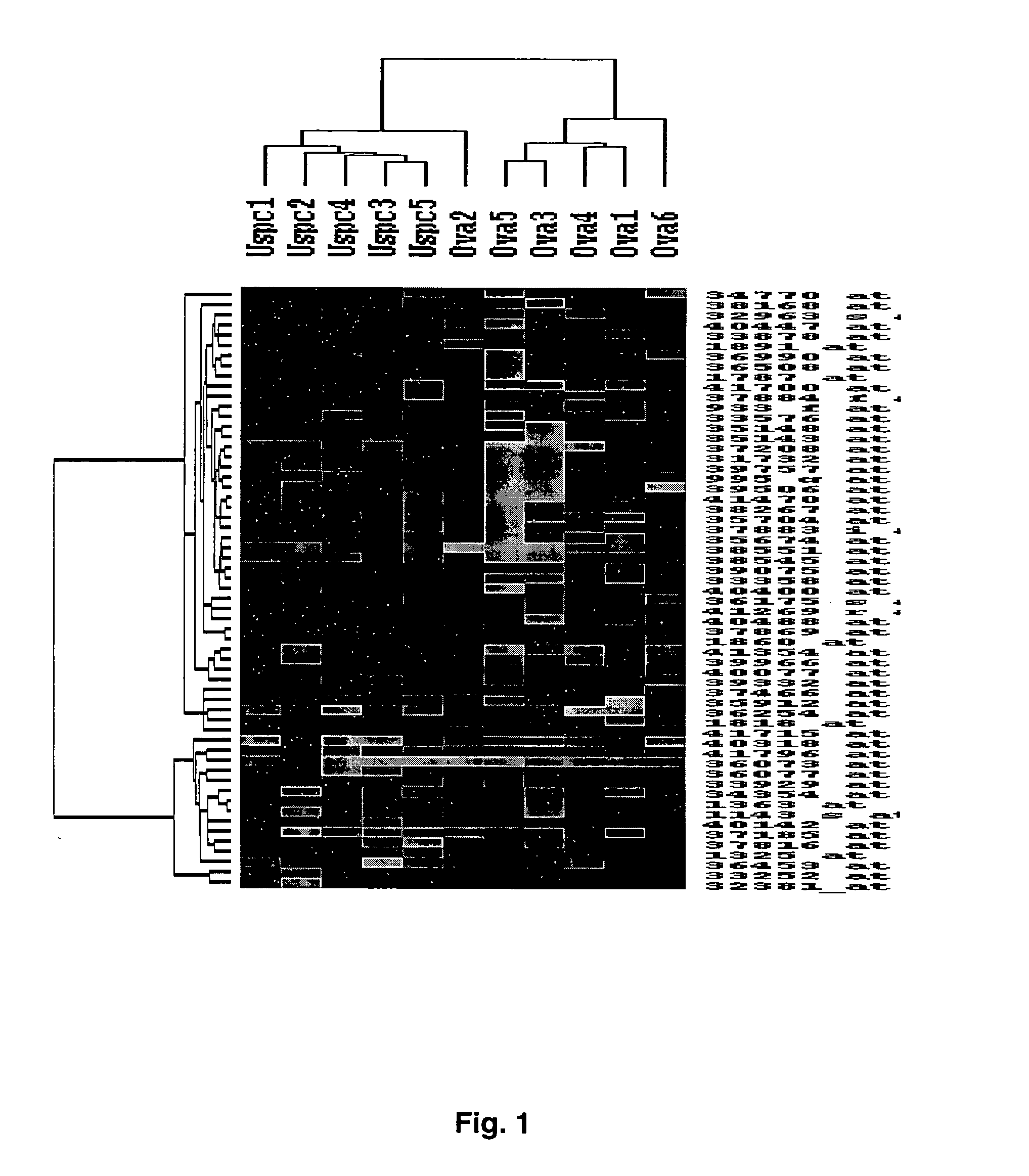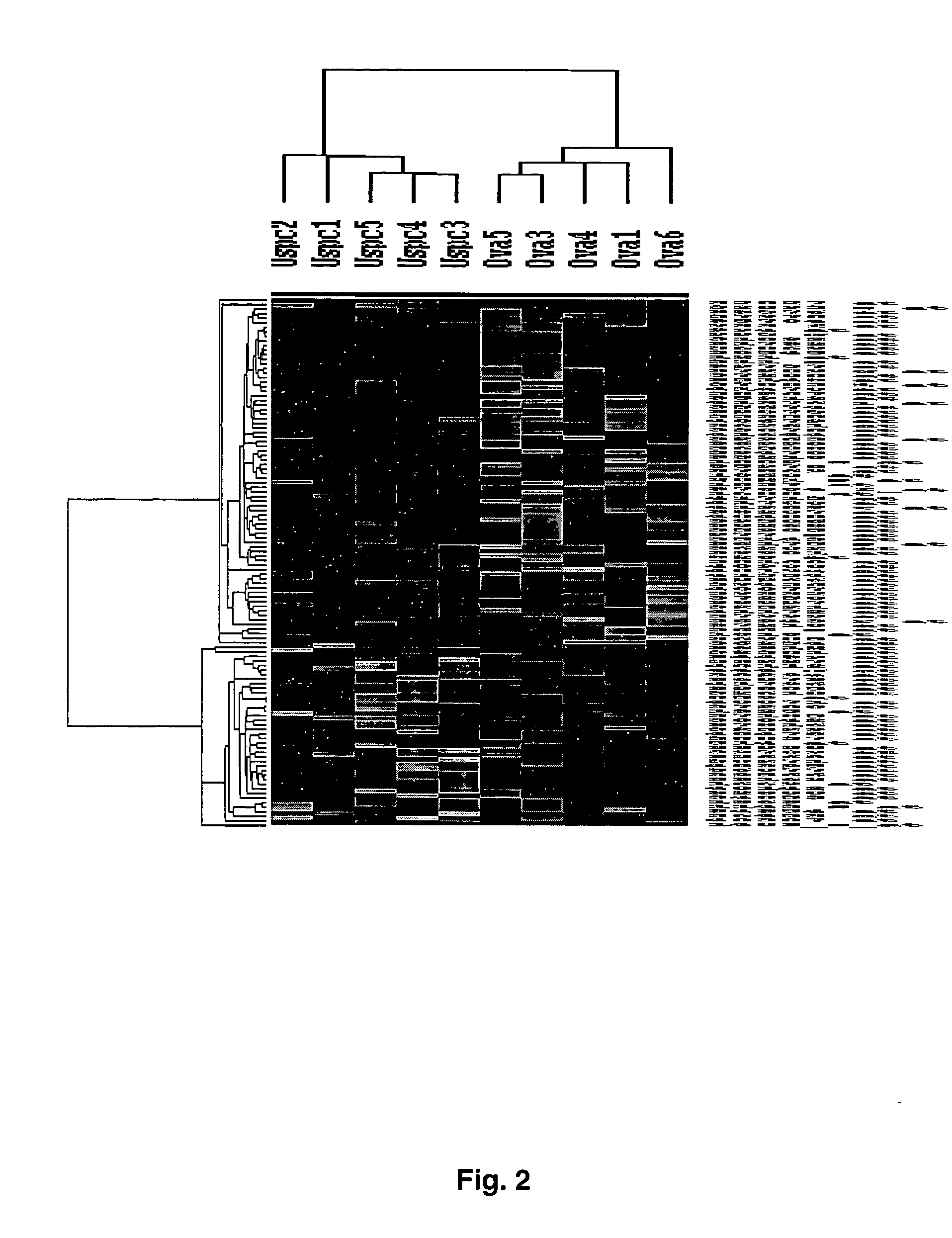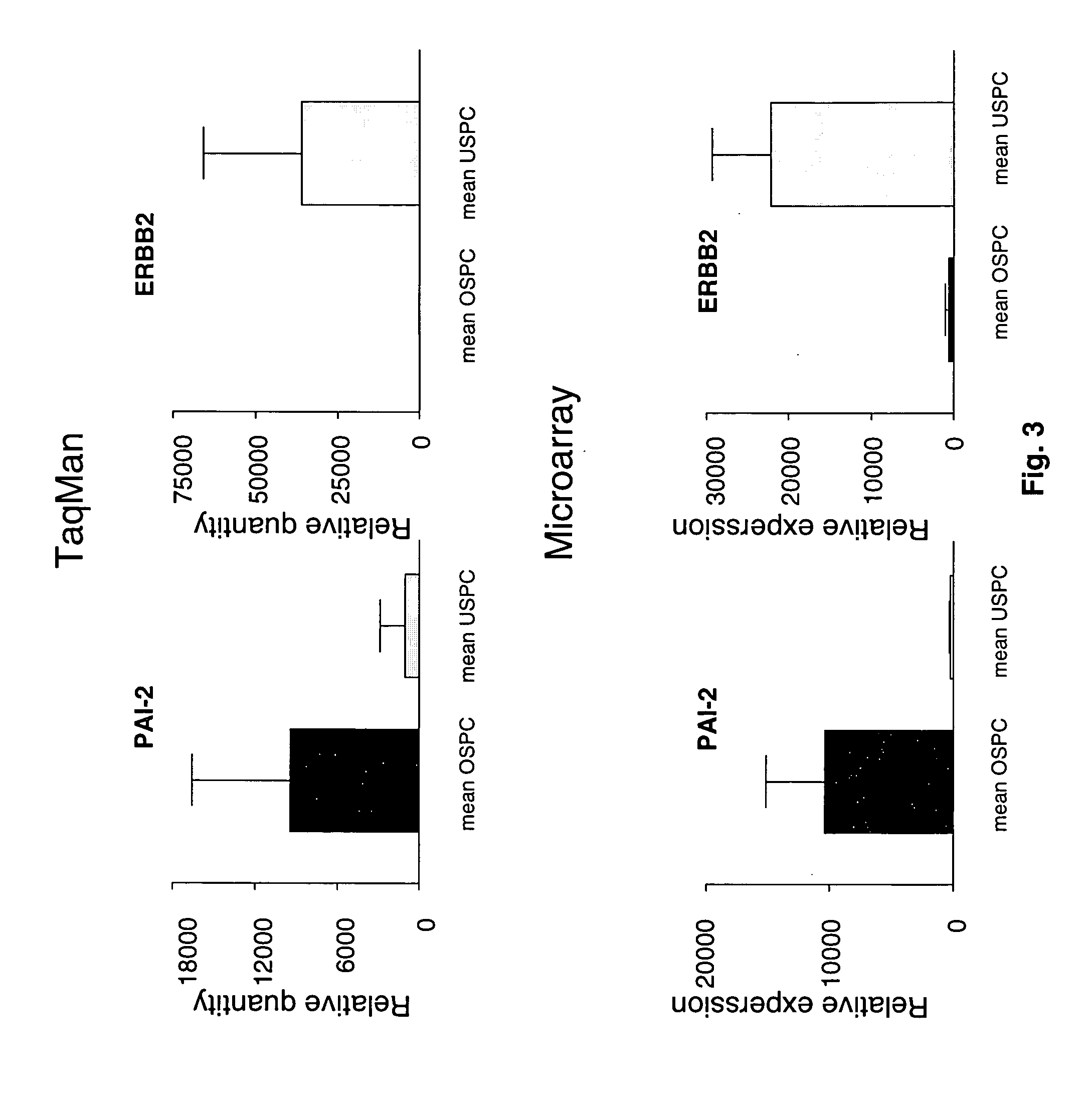Gene expression profiling of uterine serous papillary carcinomas and ovarian serous papillary tumors
a gene expression and tumor technology, applied in the field of cancer research, can solve the problems of deficient molecular basis understanding in the early art, and achieve the effect of different biological behavior and respons
- Summary
- Abstract
- Description
- Claims
- Application Information
AI Technical Summary
Benefits of technology
Problems solved by technology
Method used
Image
Examples
example 1
[0061] Establishment of Ovarian Serous Papillary Cancer and Uterine Serous Papillary Carcinoma Primary Cell Lines
[0062] Eleven primary serous papillary cell lines (6 ovarian serous papillary carcinoma and 5 uterine serous papillary carcinoma) were established after sterile processing of the tumor samples from surgical biopsies. Tumors were staged according to the F.I.G.O. operative staging system. Total abdominal hysterectomy and regional lymph node sampling for invasive uterine serous papillary carcinoma were performed in all cases. Radical tumor debulking including a total abdominal hysterectomy and omentectomy, was performed in all ovarian carcinoma patients. No patient received chemotherapy before surgical therapy. The patient characteristics are described in Table 1. The epithelial nature and the purity of uterine serous papillary carcinoma and ovarian serous papillary carcinoma cultures was verified by immunohistochemical staining and flow cytometric analysis with antibodies ...
example 2
[0063] Microarray Hybridization and Analysis
[0064] RNA purification, cDNA synthesis, cRNA preparation, and hybridization to the Affymetrix Human U95Av2 GeneChip microarray were performed according to the manufacturer's protocols and as reported (Zhan et al., 2002).
[0065] All data used in the analyses were derived from Affymetrix 5.0 software. GeneChip 5.0 output files are given as a signal that represents the difference between the intensities of the sequence-specific perfect match probe set and the mismatch probe set, or as a detection of present, marginal, or absent signals as determined by the GeneChip 5.0 algorithm. Gene arrays were scaled to an average signal of 1500 and then analyzed independently. Signal calls were transformed by the log base 2 and each sample was normalized to give a mean of 0 and variance of 1.
[0066] Statistical analyses of the data were performed with the software package SPSS10.0 (SPSS, Chicago, Ill.). The first test applied was the detection. In each ...
example 3
[0068] Gene Expression Profiles Distinguish Ovarian Serous Papillary Carcinoma from Uterine Serous Papillary Carcinoma
[0069] Flash frozen biopsies from ovarian and uterine tumor tissue are known to contain significant numbers of contaminant stromal cells as well as a variety of host derived immune cells (e.g., monocytes, dendritic cells, lymphocytes). Short term primary tumor cell cultures minimize the risk of a selection bias inherent in any long term in vitro growth and provide an opportunity to study differential gene expression between relatively pure populations of tumor cells. Thus, comprehensive gene expression profiles of 6 primary ovarian serous papillary carcinoma and 5 primary uterine serous papillary carcinoma cell lines were generated using high-density oligonucleotide arrays with 12,588 probe sets, which in total interrogated some 10,000 genes. One hundred sixty five genes were differentially expressed between ovarian serous papillary carcinoma and uterine serous papi...
PUM
| Property | Measurement | Unit |
|---|---|---|
| Gene expression profile | aaaaa | aaaaa |
| Level | aaaaa | aaaaa |
Abstract
Description
Claims
Application Information
 Login to View More
Login to View More - R&D
- Intellectual Property
- Life Sciences
- Materials
- Tech Scout
- Unparalleled Data Quality
- Higher Quality Content
- 60% Fewer Hallucinations
Browse by: Latest US Patents, China's latest patents, Technical Efficacy Thesaurus, Application Domain, Technology Topic, Popular Technical Reports.
© 2025 PatSnap. All rights reserved.Legal|Privacy policy|Modern Slavery Act Transparency Statement|Sitemap|About US| Contact US: help@patsnap.com



